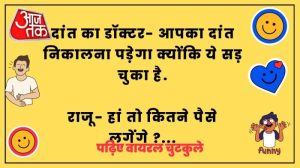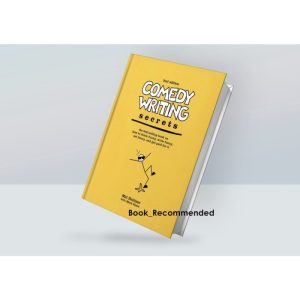
Ever dreamed of crafting jokes that leave audiences in stitches? This isn’t just about punchlines; it’s about understanding the human condition, the art of misdirection, and the power of perfectly timed pauses. We’ll delve into the fundamental building blocks of humor – from slapstick silliness to razor-sharp satire – and equip you with the tools to transform your comedic vision into reality.
Get ready to unleash your inner comedic genius!
We’ll explore various comedic styles, dissect the anatomy of a joke, and guide you through character development, scene construction, and the crucial process of refining your work. Whether you’re aiming for stand-up routines, sitcom scripts, or even witty tweets, this guide will help you hone your skills and find your unique comedic voice. Prepare for a hilarious journey into the world of comedy writing!
Understanding Comedy
So you want to be a comedy writer? Fantastic! But before you unleash your inner wit upon the world, let’s lay some groundwork. Understanding the fundamentals of humor is crucial – it’s the difference between a chuckle and a groan. This section will explore the building blocks of comedy, helping you craft jokes that land with a satisfying – thwack*.
Types of Comedy
Comedy isn’t a monolith; it’s a diverse landscape with many distinct styles. Mastering several can greatly expand your comedic arsenal. Knowing which style suits your voice and the material is key to successful comedy writing.
- Slapstick: This relies on physical humor, exaggerated movements, and often clumsy mishaps. Think Charlie Chaplin’s iconic stumbles or the pie-in-the-face gag. The humor stems from the absurdity of the physical actions and the unexpected nature of the events.
- Observational Comedy: This style focuses on the humorous aspects of everyday life. Comedians like Jerry Seinfeld built entire careers on this, finding the funny in mundane situations like airline food or dating. The key is to find the unexpected or ironic in the ordinary.
- Satire: This uses wit and irony to expose and criticize folly and vice, particularly in society or politics. Think of “The Daily Show” or the works of Jonathan Swift; they use humor to highlight hypocrisy and absurdity. The effectiveness relies on sharp observation and clever wordplay.
- Absurdist Comedy: This genre embraces the illogical and nonsensical. Think Monty Python’s Flying Circus or the works of Samuel Beckett. The humor derives from the unexpected and the complete disregard for conventional logic.
- Dark Comedy: This style uses humor to address taboo or disturbing subjects. Think of shows like “BoJack Horseman” or the films of the Coen brothers. It walks a tightrope, balancing humor with potentially offensive or upsetting themes. The success relies on skillful execution and a clear understanding of the audience.
Elements of a Joke
A well-crafted joke is like a perfectly timed punch – it needs precision and impact. Let’s break down the essential components.
- Setup: This is the foundation, setting the scene and introducing the premise. It should be engaging and intriguing, piquing the audience’s curiosity.
- Punchline: This is the climax, the unexpected twist or revelation that delivers the comedic payoff. It should be surprising, clever, and relevant to the setup.
- Comedic Timing: This is the art of delivering the joke at the perfect moment, allowing the audience to fully appreciate the setup before the punchline hits. It’s about pauses, rhythm, and pacing.
A good joke is like a well-oiled machine: each part works in perfect harmony to create a satisfying result.
Finding Your Comedic Voice
Your comedic voice is your unique perspective and style. It’s what sets you apart from other comedians. It’s not something you find overnight; it’s developed through experimentation and self-discovery.
- Experiment with different styles: Try writing jokes in various styles to see what feels natural and what resonates with you.
- Write about what you know: Draw inspiration from your own experiences, observations, and passions. Authenticity shines through.
- Find your comedic voice: Your voice is your unique perspective, your style, and what makes your humor distinctive.
- Develop your comedic persona: A distinct persona will help your audience connect with your humor.
Character Sketch: The Grumpy Gardener
Agnes Periwinkle is a seventy-year-old gardener with a permanent scowl and a trowel that doubles as a weapon. Her prize-winning begonias are her only friends, and woe betide anyone who dares to touch them. She speaks in clipped, sarcastic sentences, punctuated by the rhythmic thud of her trowel against the soil. Imagine her muttering, “Another dandelion. Really?
I swear, they reproduce faster than rabbits on Viagra.” Her eyes narrow suspiciously at any passerby, and her disapproval is palpable. Her humor stems from the contrast between her outwardly grumpy exterior and the surprisingly vulnerable moments when she whispers encouragement to her beloved begonias.
Writing Techniques for Comedy
Crafting truly hilarious comedy requires more than just stringing together funny words. It’s about building a solid foundation with compelling characters and employing a variety of techniques to create laughter. Think of it like baking a cake: you need the right ingredients and the right method to achieve a delicious result. Let’s explore some key techniques.
Strong Character Development in Comedic Writing
Compelling characters are the backbone of any successful comedy. Audiences connect with characters who are relatable, flawed, and, most importantly, funny in their own unique way. A well-developed character possesses distinct personality traits, motivations, and quirks that drive their actions and interactions. Consider the character of Phoebe Buffay fromFriends*. Her eccentricities, unconventional beliefs, and quirky song-writing are all integral to her comedic appeal.
Without these well-defined traits, her humor would fall flat. Similarly, the bumbling incompetence of Mr. Bean relies heavily on his established character traits to make his silent antics so universally understood and hilarious. Strong characters allow for consistent comedic delivery and provide a framework for witty dialogue and situational humor to thrive.
Examples of Effective Comedic Dialogue
Witty banter and comedic misunderstandings are the lifeblood of many comedic scripts. Witty banter relies on quick, clever exchanges between characters, often involving wordplay, sarcasm, and unexpected turns of phrase. Imagine a scene where two characters argue about the merits of pineapple on pizza. The humor stems from the unexpected intensity of the disagreement over such a seemingly trivial topic.
A comedic misunderstanding, on the other hand, arises when characters misinterpret each other’s words or actions, leading to humorous situations. Think of the classic sitcom trope where one character overhears a conversation out of context and jumps to an entirely wrong conclusion, leading to a series of escalating misunderstandings. For example, a character might overhear someone saying “I’m going to the bank,” and mistakenly assume they’re planning a robbery.
The Use of Irony, Sarcasm, and Wordplay
Irony, sarcasm, and wordplay are powerful tools in the comedian’s arsenal. Irony involves a contrast between expectation and reality, often creating a humorous effect. Sarcasm uses words to convey a meaning that is the opposite of their literal meaning, frequently used to express disapproval or mockery. Wordplay involves using the different meanings of words or similar-sounding words to create humor.
Consider the classic joke: “Why don’t scientists trust atoms? Because they make up everything!” This relies on the dual meaning of “make up”—to invent something and to constitute something. The effective use of these techniques can elevate a simple joke into something truly memorable.
A Scene Demonstrating Comedic Misdirection
[Scene:] Two detectives, HARD-BOILED HARRY and GOOFY GARY, are investigating a robbery at a bakery. They find a single, slightly crushed croissant on the floor.HARD-BOILED HARRY: (examining the croissant) This is it, Gary. The smoking gun.GOOFY GARY: (squinting) A croissant? But…it’s just a croissant.HARD-BOILED HARRY: Don’t underestimate the power of the croissant, Gary.
Observe the subtle dent. The thief, clearly a master pastry-based criminal, dropped this as they fled the scene with the loot. The dent? A clear indication of their getaway vehicle – a runaway shopping cart!GOOFY GARY: A runaway shopping cart? But…why a shopping cart?HARD-BOILED HARRY: Because, Gary, only a mastermind would use a shopping cart to escape with stolen pastries.
Think of the aerodynamics! The maneuverability! This was no ordinary robbery; this was a work of art! (He dramatically points to the croissant again). The croissant speaks volumes!(The camera pans to a large, empty display case, and then to a note left on the counter: “Sorry, I ate all the donuts.
The Baker”)
Structuring a Comedy Piece
Crafting a killer comedy piece isn’t just about stringing together funny lines; it’s about building a comedic structure that keeps your audience engaged and leaves them in stitches. Think of it like a rollercoaster – you need thrilling ups and downs, moments of suspense, and ultimately, a satisfying conclusion. This involves careful consideration of structure, pacing, and character interaction.
Three-Act Structure for Comedic Sketches
The three-act structure, a staple in storytelling, works brilliantly for comedy. Each act serves a distinct purpose in building the joke and delivering the punchline. Act One sets the scene, introduces the characters, and establishes the initial comedic premise. Act Two introduces conflict and complications, ratcheting up the tension. Act Three resolves the conflict, often with a surprising or unexpected twist, leading to the comedic payoff.Let’s imagine a sketch about a disastrous cooking competition.* Act One: We meet our overly confident contestant, Barry, and his equally incompetent rival, Brenda.
They’re both terrible cooks but fiercely competitive. The setting is a chaotic kitchen, already hinting at potential disaster.* Act Two: Barry attempts a complex soufflé, resulting in a series of increasingly hilarious mishaps. Brenda, meanwhile, tries to sabotage him, leading to a flour-fight and a broken oven. The tension builds as the judges approach.* Act Three: The judges arrive to a scene of utter chaos.
Barry’s soufflé is a burnt mess, and Brenda’s dish is inedible. However, a stray cat knocks over a bowl of whipped cream, creating an unexpectedly beautiful (and edible) dessert, leading to an absurdly happy ending.
Building Comedic Tension and Release
Comedy thrives on the interplay of tension and release. You build tension by creating anticipation, obstacles, and near misses. The release comes when the tension is broken, often unexpectedly, resulting in laughter. Think of a classic slapstick routine: a character attempts to walk across a tightrope, almost falling repeatedly, building tension, only to trip hilariously at the end, releasing the tension with a laugh.
In our cooking competition sketch, the tension builds as Barry’s soufflé fails, Brenda sabotages him, and the judges approach. The release comes from the unexpected whipped cream dessert.
Pacing and Rhythm in Comedic Writing
Pacing refers to the speed at which the joke unfolds. A fast pace can create frantic energy, while a slow pace can build anticipation and suspense. Rhythm refers to the pattern of comedic beats – the timing of jokes, pauses, and character interactions. A well-paced and rhythmically sound piece will feel natural and engaging. In our sketch, the pace might be faster during the chaotic cooking scenes and slower during the judges’ arrival, creating a satisfying ebb and flow.
Writing Comedic Scenes with Multiple Characters
Multiple characters can amplify comedic potential, creating opportunities for witty banter, misunderstandings, and contrasting personalities. Careful planning of character interactions is crucial.
| Character | Comedic Role | Interactions | Example Dialogue |
|---|---|---|---|
| Barry | Overly confident, incompetent cook | Interacts with Brenda, judges, and the cat | “This soufflé is going to be legendary… or at least edible… hopefully.” |
| Brenda | Sarcastic rival, equally incompetent | Interacts with Barry, judges | “Oh, look, Barry’s ‘legendary’ soufflé is already on fire. Impressive.” |
| Judge 1 | Stern, easily shocked | Interacts with Barry and Brenda | “I’ve judged many cooking competitions, but this… this is a new level of disaster.” |
| Judge 2 | Deadpan, easily amused by chaos | Interacts with Barry and Brenda | (Staring at the mess) “Well, it’s certainly… memorable.” |
Finding Inspiration and Refining Your Work

So, you’ve learned the theory, now it’s time to get your comedic genius flowing! But the path to hilarious isn’t always paved with punchlines. This section will arm you with strategies to overcome common hurdles and refine your comedic craft. We’ll explore ways to find inspiration, handle criticism, and conquer that dreaded writer’s block.
Common Pitfalls in Comedy Writing and Avoidance Strategies
Comedy writing, like any craft, has its traps. One common pitfall is relying too heavily on tired tropes or predictable setups. Another is neglecting character development, resulting in jokes that fall flat because the audience doesn’t connect with the characters. Over-reliance on shock value, without clever writing, is another frequent issue, often alienating audiences instead of amusing them.
To avoid these, focus on originality. Dig deep for unique perspectives and relatable experiences. Develop well-rounded characters with flaws and motivations that resonate with the audience. Prioritize clever wordplay and insightful observations over cheap laughs. Remember, subtlety can be just as powerful as overt humor.
The Importance of Audience Feedback and Constructive Incorporation
Audience feedback is invaluable. It provides a direct line to whether your jokes land or fall flat. However, receiving criticism can be challenging. The key is to approach feedback objectively. Don’t take it personally.
Instead, analyze the responses. Did a joke bomb because the premise was unclear? Was the timing off? Was it simply not funny? Identify patterns in the feedback and use them to refine your material.
Remember, not every joke will work for every audience, but consistent negative feedback on a particular joke suggests it needs revision or removal.
Overcoming Writer’s Block in Comedic Writing
Writer’s block can strike even the most seasoned comedians. To overcome it, try freewriting: just write whatever comes to mind, even if it’s nonsensical. This can help break through mental barriers. Another tactic is to change your environment. A change of scenery can spark new ideas.
Engage in activities unrelated to writing; sometimes, stepping away allows your subconscious to work on the problem. Collaborate with other writers; bouncing ideas off someone else can be incredibly helpful. Finally, revisit your comedic influences. Study the work of your favorite comedians and analyze their techniques. What makes their jokes funny?
Can you adapt their strategies to your own material?
Examples of Successful Comedic Writing and Their Techniques
Let’s examine some examples. Consider the observational humor of comedians like Bill Bryson. His humor stems from finding the funny in everyday situations, relying on precise language and witty asides. Alternatively, the absurdist humor of Monty Python relies on unexpected juxtapositions and surreal scenarios. Their success comes from a commitment to the absurd, defying logic and expectations.
These contrasting styles demonstrate that there’s no single formula for successful comedy; the key is to find your voice and stick to it. Analyzing different styles helps you understand the versatility of comedy and find your unique approach.
Entertainment & Humor

Comedy, that delightful elixir of laughter, takes many forms, each with its own unique flavor and delivery system. From the intimate setting of a stand-up routine to the sprawling narrative of a sitcom or movie, the fundamental goal remains the same: to elicit laughter and, often, to provoke thought. Understanding the nuances of these different comedic styles is crucial for any aspiring comedy writer.
Comedic Styles Across Media
Stand-up comedy relies heavily on the performer’s charisma and the immediacy of the interaction with the audience. Jokes are often observational, personal anecdotes, or witty riffs on current events. Sitcoms, on the other hand, utilize recurring characters and situations, building upon established dynamics and comedic tropes. Movies, with their greater scope and budget, can incorporate a wider range of comedic styles, from slapstick to dark humor, often weaving comedy into more complex narratives.
The constraints and opportunities differ greatly across these mediums. A stand-up comedian might rely on quick wit and improvisation, while a sitcom writer crafts meticulously structured jokes and storylines across multiple episodes. A film might blend various comedic approaches, leveraging visual gags alongside witty dialogue.
Social Commentary and Satire in Comedy
Comedy often serves as a powerful tool for social commentary and satire. By highlighting societal absurdities, hypocrisy, or injustices through humor, comedians can spark dialogue, challenge norms, and even inspire change. Satire, a particularly potent form of comedic social commentary, uses irony, exaggeration, and ridicule to expose and criticize folly or vice. Think of the biting wit of Jon Stewart’s “The Daily Show” or the absurdist satire of “South Park,” both of which have used humor to address significant political and social issues.
However, the line between effective satire and offensive humor can be blurry, requiring careful consideration.
Ethical Considerations in Comedy
The ethical implications of humor are complex and often debated. The challenge lies in finding the balance between pushing boundaries and avoiding harmful stereotypes or offensive material. Humor that relies on demeaning or perpetuating negative stereotypes about marginalized groups is unacceptable. Instead, responsible comedy writers should strive to create humor that is inclusive, thoughtful, and avoids reinforcing harmful biases.
This involves self-reflection, sensitivity to diverse perspectives, and a willingness to engage in critical self-assessment.
“The goal is not to offend, but to illuminate.”
This principle should guide the creation of any comedic work.
Humor and Social Issues: A Short Piece
The local bakery, “Crumbs of Comfort,” was known for its delicious pastries and its equally delicious, albeit slightly bizarre, owner, Agnes Periwinkle. Agnes, a staunch advocate for sustainable living, had recently installed a solar-powered oven, resulting in some…unpredictable baking outcomes.
“My sourdough starter, Bartholomew, is now communicating with the solar flares,” Agnes explained, holding up a loaf of bread shaped like a question mark.
This, however, was not the most unusual aspect of her business. Agnes had decided to address the town’s growing issue of plastic waste by using only biodegradable packaging, made from recycled newspapers. The resulting prints on the pastries were…unconventional. One customer received a croissant adorned with a rather alarming headline: “Local Man Claims to Have Seen a Unicorn.”
“It’s all about repurposing,” Agnes beamed, completely oblivious to the customer’s horrified expression.
While some found her methods unconventional, Agnes’s commitment to environmental sustainability and her unintentionally hilarious approach to problem-solving sparked a conversation in the town. Her unusual business practices, though initially met with confusion, ultimately prompted residents to reflect on their own consumption habits and the impact of plastic waste. Agnes’s quirky methods, far from being a mere comedic anecdote, became a catalyst for positive change.
Final Thoughts
So, you’ve learned about the diverse world of comedy, mastered the art of crafting a killer joke, and discovered your own unique comedic voice. Remember, the key to successful comedy writing lies in understanding your audience, embracing experimentation, and never being afraid to push boundaries (responsibly, of course!). Go forth and create laughter; the world needs more of it!
FAQ Overview
How do I overcome writer’s block when writing comedy?
Try freewriting, brainstorming with others, watching stand-up specials for inspiration, or changing your environment. Sometimes, a simple walk can do wonders!
What’s the difference between observational and satirical comedy?
Observational comedy finds humor in everyday life, while satire uses humor to critique society or specific issues. Think Jerry Seinfeld vs. Jon Stewart.
How important is comedic timing in writing?
Crucial! Proper pacing and pauses create anticipation and amplify the punchline’s impact. Think of it as the musicality of laughter.
Where can I get feedback on my comedy writing?
Join online writing communities, share your work with trusted friends or beta readers, or take a comedy writing class.





